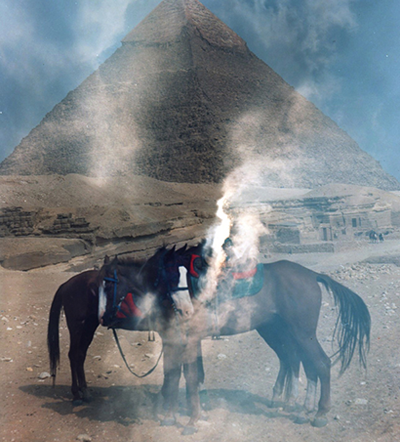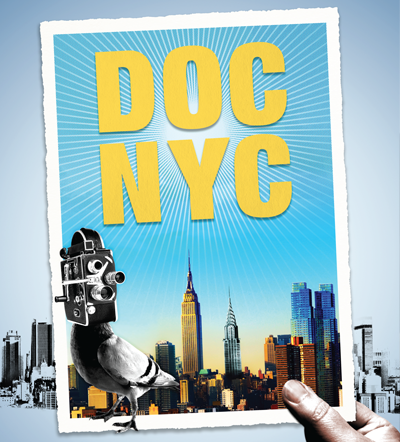
![]()
Now in its third year, the IFC Center’s DOC NYC is one of the most consistently absorbing and downright important showcases for documentary film. The buzziest entries this year are The Central Park Five, Ken Burns’ look at the 1989 “crime of the century” rape, and Alison Klayman’s portrait of Ai Weiwei, which PLANET profiled here. But the best thing about DOC NYC is its knack for finding lesser-known gems. The festival ends this Thursday, but there are still five standout films that are screening—some more than once—over the next few days.



Garden and house, Tokyo, Japan, 2011. Office of Ryue Nishizawa.
If there’s any rule at all governing architecture today, it’s that anything goes. Advanced computer-assisted modeling and fabrication techniques make it possible to build highly complex shapes. Emerging economies and burgeoning cities demand super-sized structures. And there’s no lingua franca for architects working around the world: just about anything each one of them draws can be built. A new book, The Sky’s the Limit: Applying Radical Architecture, takes a closer look at some prominent avant-garde buildings from around the world and tries to puts a finger on what’s really going on. It’s no easy task.
This book classifies buildings according to their physical character: organic, sharp-edged, pixellated, interior, and outward-looking. While radially different from one another, each of these approaches can be understood as a form of resistance to the generic, commercial glass-box buildings that have come to populate our cities. There’s a movement towards gently swollen and rounded forms, expressed in a language similar to Zaha Hadid’s Acquatics Center for the 2012 London Olympics. There’s also a movement for modulated structures that have been broken into an array of smaller parts, like Frank Gehry’s Guggenheim Museum in Bilbao. Both these types of buildings reflect a yearning for more varied, surprising and sensual forms. In that sense they’re opposed to orthodox twentieth-century modernism.

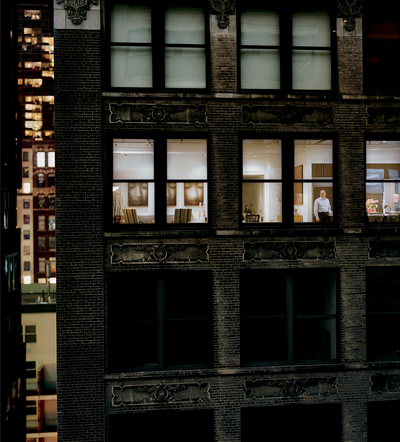
From Out My Window by Gail Albert Halaban, published by powerHouse Books
If you live in a city, in a place where you can look into other people’s windows through your own, it may be irresistible to indulge your voyeuristic impulses. We all love mysteries, and what could be more mysterious than a parallel life witnessed in glimpses through glass? Just ask Jeff Jeffries, the character played by James Stewart in Hitchcock’s masterful Rear Window. Laid up at home with a broken leg, Jeffries gets so involved with his Greenwich Village neighbors that he gives them inventive nicknames like “Miss Torso.”
With its crowded-together buildings and social diversity, New York City is the perfect locus for a film like Rear Window, or the similarly voyeuristic Dirty Windows, photographer Merry Alpern’s 1995 book of images secretly shot through the window of a low-rent sex club. But not everything going on through those neighboring windows is tacky or suspicious. Witness Gail Albert Halaban’s beautiful new book Out My Window (powerHouse), a warm and lyrical study of New Yorkers and their windowscapes.


Solar Water Pump Testing Site in Safford, AZ/SunPumps
Tech aficionados will be queuing up this holiday season to score the latest, hottest gadget ever invented. That’s become the standard during these glory years of the plugged-in generation. And while communication is now possible across a broader geographic and social range than might ever have been imagined, it’s remarkable in this time of hyper-connectivity that nearly 1.5 billion people around the world, approximately 20% of the global population, are still living in the dark. Not only do these people lack the ability to charge a cellular phone or connect to the Internet, they’re without basic lighting and the economic opportunities that come with it. Raising the living standard in the world’s poorest communities will not take electrical power alone, but the expansion of access is seen as a key element in realizing the UN’s Millennium Development Goals and finally bringing everyone into the 21st Century.
The challenges are significant, but there’s an important role to be played by sustainable energy resources in addressing the problem. The topic of how renewables can alleviate energy poverty is sure to be among those discussed when the Alliance for Rural Electrification and its partners gather in Accra next week for the first International Off-Grid Renewable Energy Conference.



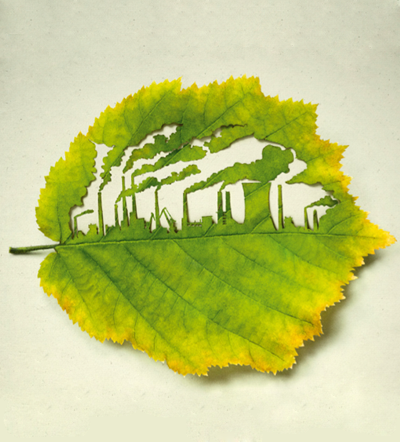
Leaves by Delaney, Global Marshall Plan Initiative, Plant-for-the-planet.org from Cause and Effect, copyright Gestalten 2012
If you’ve looked at the polling data being collected in the swing states ahead of next month’s presidential election, or even if you haven’t, you probably know that the economy ranks highest among likely voters when it comes to the issues informing their choice between the candidates. Also routinely mentioned are unemployment, health care, and the budget deficit. While it’s unsurprising that these dollars and cents issues loom large in a time of widespread economic hardship, what’s noticeably missing from most polls altogether is the environment and energy.
Signs of climate change’s impact have become more apparent since the last time Americans elected a president, but the environment and related energy issues seem to have been downgraded in the mind of the average citizen. At this point in the cycle four years ago, even as the solvency of the nation’s banks was in question, a Quinnipiac poll found that between six and eight percent of voters in the key swing states and between nine and twelve percent of independents in those places named energy policy as the single most important issue upon which their decision would rest.

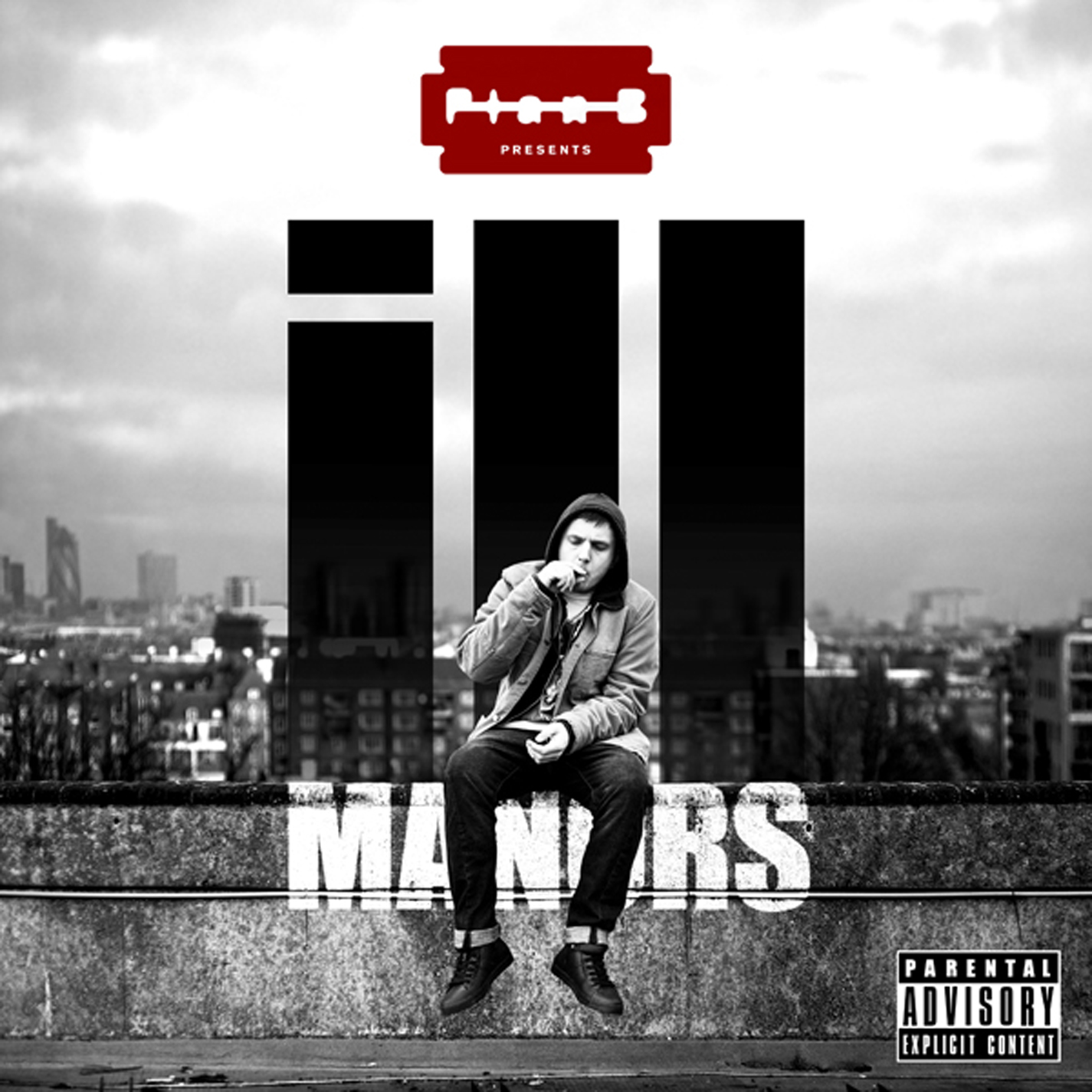
![]()
Ben Drew’s emotions are always on the extreme end of the intensity scale. The sole powerhouse behind the entity Plan B, the 28-year-old Drew displays forceful passion no matter what the situation. Speaking non-stop about large-scale ideas, Drew’s ambitions sound like the kind of big talk people spout when they have nothing going on. Except that Drew has a lot going on. Anything he ever said he was going to do, Drew did it. Singing his raps with just a guitar? He did that. Number one album? Did it. Acting? Done. Writing and directing a feature film? Done and done.
No matter what the vehicle, Drew’s intensity is relayed potently. Initially introduced to the world as a musician, his 2006 debut album, Who Needs Actions When You Got Words is the kind of album the Parental Advisory sticker was created for. Putting no filter on Actions’ language, Drew lets forth with a flow similar to Eminem. With a distinct British undercurrent of urban street rhythm, Drew paints a stark picture of growing up in England. Four years later, he restyled himself as a Motown crooner with The Defamation Of Strickland Banks.
![]()
Audio clip: Adobe Flash Player (version 9 or above) is required to play this audio clip. Download the latest version here. You also need to have JavaScript enabled in your browser.



© Samantha Casolari
When photographer and past PLANET contributor Samantha Casolari told us she was headed home to Italy for summer vacation, we asked if she could send back some images from her trip. The collection presented here, intimate images that exude a sense of place, friendship, and the passage of time, are imbued with Samantha’s signature sense of color and mood. They are fitting remembrance of a summer just passed.

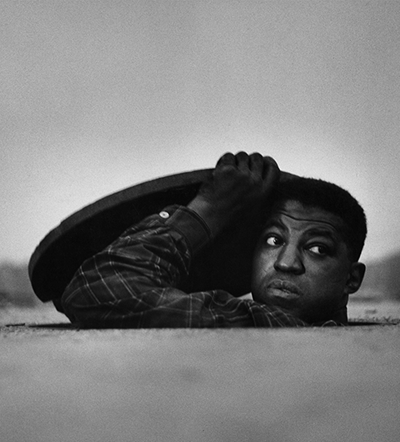
The Invisible Man, Harlem, New York, 1952. Gelatin silver print
“I am an invisible man,” begins Ralph Ellison’s famous 1952 novel, in an opening that rivals “Call me Ishmael” and “Lolita, light of my life” for its compact resonance. The narrator of Invisible Man goes on to say that he’s “not a spook like those that haunted Edgar Allan Poe; nor am I one of your Hollywood movie ectoplasms.” Instead, his invisibility is caused by race: being a black man in 1950s America makes him a blank canvas onto which people’s fears and anxieties are projected.
How do you photograph an invisible man? That was the challenge Gordon Parks took up in 1952, when Invisible Man was published. At that time, Parks himself was a highly visible black man. He’d broken through race barriers to become the first African-American staff photographer at Life magazine, and had written his own prose and poetry. He’d made an enduring and iconic portrait, American Gothic, in which a dignified cleaning woman symbolizes the shabby treatment of blacks in America.
The soulful images Parks produced, with inspiration from Ellison’s novel, are the subject of an intriguing exhibition, Contact: Gordon Parks, Ralph Ellison and ‘Invisible Man’ at the Howard Greenberg Gallery. At the time he made this work, Parks had just won a plum assignment to work in Paris for Life. He was leading a cosmopolitan life of glamor–but his passion and empathy for Harlem shines bright and clear in his Invisible Man series.

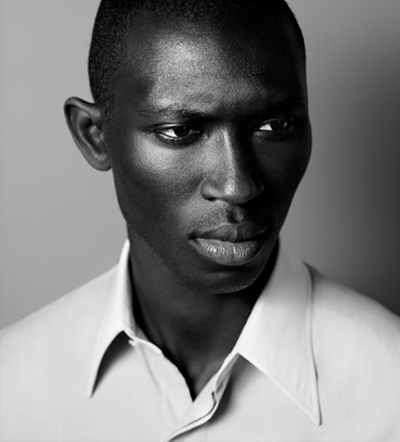
Shirt by A. Sauvage
Few fashion houses have a a mantra like D.E.– Dress Easy, and a film showcased at the Sundance Film Festival.. The orchestrator behind it all: Adrien Sauvage, founder of the House of A. Sauvage. In 2011, Sundance film Festival showcased This is Not A Suit, a sort of existential enquiry about the designer and his collection, reminiscent of Absurdist plays such as those by Samuel Beckett. The film features Sauvage in a room in solitude, as a voice over explains,“the art of D.E.”
The film is also the title of an ongoing project that involves Sauvage dressing those close to his heart–from filmmakers and musicians like Spike Jonze, Terry Gilliam, and Eliot Sumner, to sports veterans like Sauvage himself, who was a professional basketball player during his youth. Changing focus from sports to the art of Savile Row at 20, every representation of Sauvage’s brand is striking. His methodology of creating suits according to activity (for example, what is the perfect suit for grabbing a cup of coffee?), the presentation of his collection, both still and in motion, and the words used to string all elements together–Sauvage is a creator who knows what he’s doing and it comes through in everything he does. Sauvage’s aim is to create a timeless existence, unconfined by seasons and trends. As the voice over states in This is Not A Suit, Sauvage indeed “constructs his own time” and this is what makes his brand so seductive.






 Facebook
Facebook Permalink
Permalink Digg
Digg Reddit
Reddit LinkedIn
LinkedIn StumbleUpon
StumbleUpon Tumblr
Tumblr